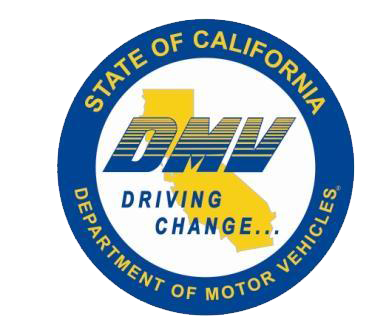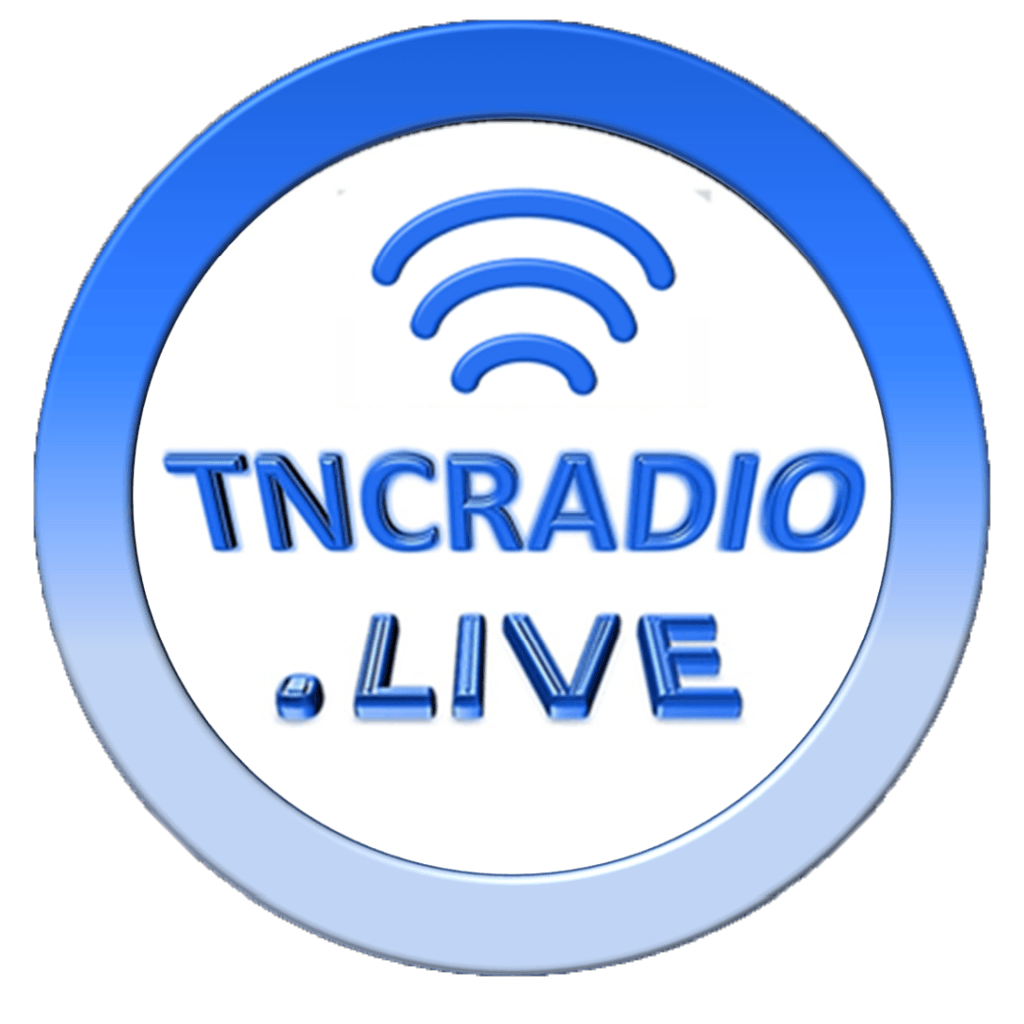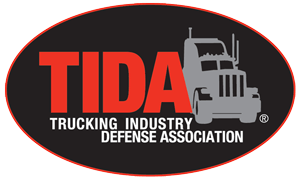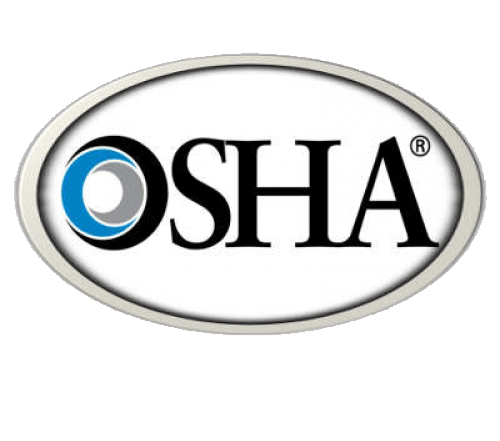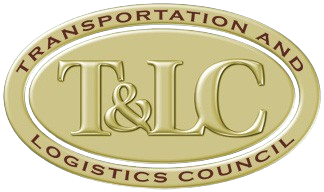MOTOR CARRIER Tax & Registration
An In-depth Understanding the Requirements
The topic of tax and registration covers many areas, both state and federal, both interstate and intrastate. While it is important to look at each component of vehicle legalization and credentialing separately to fully understand each component’s requirements, there may be overlap. Understanding the basics of each component, and how they fit together with one another, is essential to ensure your ongoing vehicle compliance.

Motor carrier tax and registration requirements are handled by many different agencies, both federal and state. Carriers that need tax and registration assistance are often confused by which agency is responsible and are unsure where to turn with questions. To further complicate matters, the applicability of certain tax and registration requirements depends on the sizes and types of vehicles being operated, and often does not closely align with the Federal Motor Carrier Safety Administration (FMCSA) requirements.
The states and provinces administer the International Fuel Tax Agreement (IFTA) and the International Registration Plan (IRP). The federal Internal Revenue Service (IRS) is responsible for the heavy vehicle use tax (HVUT), and a handful of states require certain carriers to fie special state “weight-mile” taxes. These state-specific taxes are in addition to IFTA, IRP, and the HVUT.
In the following, we will take a closer look at some of the most common tax and registration applicable to most carriers.
International Fuel Tax Agreement (IFTA)
The International Fuel Tax Agreement (IFTA) is n agreement for the collection and distribution of fuel use tax revenues. The lower 48 states and the 10 Canadian provinces ae members of IFTA. IFTA allows carriers, including private carriers, to obtain one license and file quarterly tax returns with one base jurisdiction. As an IFTA registrant, you obtain the IFTA license through the base jurisdiction and file the taxes with your base jurisdiction. The base jurisdiction then distributes the necessary fuel taxes to other jurisdictions. IFTA applies to qualified motor vehicles operating in more than one jurisdiction.
A “qualified motor vehicle” is a motor vehicle used, designed, or maintain for transportation of persons, and that
- Has two axles and a gross vehicle weight or registered gross vehicle weight exceeding 26,000 lbs.; or
- Has three or more axles regardless of weight (counting axles on the power unit only); or
- IS used in combination, when the eight of such combination exceeds 26,000 lbs. gross weight or registered gross vehicle weight
Qualified motor vehicles do NOT include recreational vehicles. Vehicles operating strictly intrastate ae not required to register under IFTA in most cases, but some jurisdictions might require them to be reported or may have intrastate fuel reporting requirements.
As a IFTA-licensed carrier, you are required to display two IFTA decals per vehicle and carry a copy of the IFTA license in each vehicle. As of January 2019, carriers are allowed to carry heir IRP cab cards electronically.
Last but not least, IFTA records must be retained for four (4) years from the date of filing the tax reports based on the records.
RECORDKEEPING
You are required to keep records of fuel purchased, received, and used in the course of business. The records must contain items such as date of each receipt of fuel, name and address of the person from whom the fuel was purchased or received, and the number of gallons/liters of fuel received. You must also keep detailed distance records by vehicles showing the taxable and non-taxable use of fuel, distance traveled for taxable and non-taxable use, and distance recaps for each vehicle for each jurisdiction in which the vehicle operated.
A common method of keeping track of mileage and fuel data is with the individual vehicle mileage report (IVMR). Electronic recordkeeping systems, such as the use of a global positioning system (GPS) or electronic logging devices (ELDs) can be used to record mileage data, but must meet the requirements of IFTA, such as the NTA ELD.
At a minimum, you should keep mileage data on each vehicle for each trip through a monthly fleet summary.
For the fuel purchases to count as tax-paid fuel purchases, you must keep records proving that the tax paid at the time the fuel was purchased. Acceptable records to satisfy this requirement must contain the date of purchase, seller’s name and address, number of gallons/liters purchased, fuel type, price per gallon/liter or the total amount of sale, unit numbers, and purchaser’s name.
TAX Reporting
You are required to file quarterly tax returns and pay any taxes due with your base jurisdiction according to the following schedule.
IFTA Quarterly Return Due Dates
Reporting Quarter Due Date
January – March (1st) April 30
April – June (2nd) July 31
July – September (3rd) October 31
October – December (4th) January 31
TRIP PERMITS
If you operate qualified vehicles interstate, you are subject to IFTA. There are two options for compliance.
First, it you frequently operate qualified vehicles interstate, you will most likely obtain permanent IFTA operating credentials and file the quarterly tax forms.
Second, the other option if you operate qualified vehicles interstate only for a few trips throughout the year, however. If you have frequent trips interstate trips, you may satisfy your IFTA obligations through temporary trip permits. Trip permits are obtained, for a small fee, from the intended states or provinces of travel. They ae usually valid for a 72-hour period.
International Registration Plan (IRP)
The International Registration Plan (IRP) I an agreement that provides for the apportioned registration of commercial motor vehicles allowing a qualified commercial vehicle shown on the cab card. The lower 48 states, the District of Columbia, and the 10 Canadian provinces ae members of the IRP.
The IRP registration is based upon “apportioning” the fees, which means paying fees in proportion to the distance traveled in each jurisdiction. For example, is a carrier operates 70% of its miles n Wisconsin and 30% of its miles in Illinois, then 70% of the registration fees are paid to Wisconsin and 30% to Illinois. A carrier registers in a single base state or province (base jurisdiction).
Applicability
“Apportionable vehicle” means any power unit that is used or intended for us in two or more member jurisdictions and that is used for the transportation of persons for hire or designed, used, or maintained primarily for the transportation of property, and:
- Has two axles and a gross vehicle weight or registered gross vehicle weight in excess of 26,000 lbs.; or
- Has three or more axles, regardless of weight (count axles on power unit only); or
- Is used in combination, when the gross vehicle weight of such combination exceeds 26,000 lbs.
- Recreational vehicles, vehicles displaying restricted plates. And government-owned vehicles ae not apportionable vehicles. Charter buses that exceed 26,000 lbs. gross weight or registered gross weight, or that have three or more axles regardless of weight are subject to IRP
Credentials
Your vehicles that are properly registered under the IRP receive one apportioned license plate and a cab card from your base jurisdiction. The cab card lists all the members IRP jurisdictions plus the registered weight the vehicle must comply with to operate in each jurisdiction.
Cab cards are vehicle-specific, and the original cab card must be carried in the vehicle for which it was issued. Copies are usually not allowed. Starting in January 2019, carriers will be allowed to carry their IRP cab cards electronically.
Vehicles registered under the IRP ae authorized to travel either intrastate or intrastate in all jurisdictions. No additional vehicle registration is required for intrastate travel.
Recordkeeping
When you are apportioned under IRP, you must keep track of all mileage by jurisdiction with an individual vehicle mileage records (IVMR) or other electronic recording devices, such as the NTA ELD which has both GPS & IFTA tracking. The IRP clearly states what us expected regarding recordkeeping requirements and should be consulted for more details. The IVMR or other distance data that is captured and used for IFTA can be shared and used for IRP annual reporting.
The IRP requires the license to preserve the records the apportioned registration application is based upon for the current application year, plus the three preceding mileage years. Depending on when you might be required to renew your registration, this time period may be over six years. It is recommended to keep your mileage data for six and one-half years for this reason.
You must also maintain monthly and quarterly summaries, and must also maintain a summary of the quarterly summaries. The monthly summary must include both:
- The distance traveled by each apportioned vehicle in the fleet during the calendar month, and
- The distance traveled in the month by each apportioned vehicle in each jurisdiction.
Non-IRP Apportionable Vehicles
Although exempt from the requirement to obtain apportioned plates, if you are operating a two-axle truck or truck-tractor, or a power unit in a combination of vehicles having a gross vehicle weight of 26,000 lbs. or less, you may register them under IRP at your option.
There may be a good reason to apportion a vehicle even though it is not required to be apportioned under the IRP. If you choose not to apportion vehicles, the vehicles become subject to individual jurisdiction registration laws. Some jurisdictions will grant reciprocity to non-IRP apportionable vehicles while others will a trip permit (or would accept full apportioned registration). Frequent interstate travel, or intrastate travel within a jurisdiction, may be a reason to apportion a non-apportionable vehicle.
You should verify the requirements of the jurisdiction of travel before entering the jurisdiction.
TRIP PERMITS
There are a few different circumstances under which you may need a temporary trip permit to satisfy your vehicle registration obligations for interstate travel:
- No IRP credentials. If you normally operate intrastate-only with base-plated (registered only for the state of operation) but you need to operate an apportionable vehicle interstate, a trip permit must be obtained from the intended states or provinces of operation.
- Vehicles with restricted plates, Plate such as dealer plates, manufacturer plates, or farm plates are examples. These plates are usually only valid in the state in which they were issued and the vehicles ma require trip permits to operate interstate.
- Non-apportionable vehicles. Again, a trip permit may be needed for a non-apportionable vehicle for interstate or intrastate travel within a jurisdiction.
Registration trip permits are generally valid for 72 hrs. and must be obtained for each vehicle, for each trip of intended travel.
FULL Reciprocity Plan under the IRP
Throughout 2015, the IRP implemented the Full Reciprocity Plan (FRP). The FRP changed the IRP by granting all apportioned vehicles full reciprocity in all member jurisdictions. This means that all IRP jurisdictions now appear on all cab cards and that carriers no longer need to declare jurisdictions of travel.
Carriers also no longer need to add jurisdictions to their registrations during the year and pay high registration fees to do so. Carriers only pay registration fees based on the actual distance traveled in the jurisdiction and no longer need to estimate distances by jurisdiction. And, because apportioned vehicles are legally registered in all jurisdictions, the need for trip permits for apportioned vehicles was eliminated.
Crossing the Canadian Border
As international programs, IFTA and IRP affect carriers in both the United States and Canada.
In early 2019, the Canadian government introduced a fuel charge as part of its Greenhouse Gas Pollution Pricing Act, which is being administered by the Canada Revenue Agency (CRA). The tax applies to U.S.-based and Canada-based carriers that operate into the listed provinces.
Motor carriers providing commercial transportation of individuals or goods into, or travel through, the provinces of Alberta, Manitoba, New Brunswick, Ontario, and Saskatchewan or the territories of Nunavut and Yukon are required to register with the CRA and are subject to quarterly fuel charge filings. Canada’s fuel charge filing is in addition to the IFTA filings.
The fuel charge program applies to a variety of entities, including road carriers using qualifying motor fuel when operating specified commercial vehicles in the listed provinces. Qualifying motor fuel includes gasoline, light fuel oil, marketable natural gas, and propane. Commercial vehicles that meet the definition of a qualified motor vehicle under IFTA are subject to the fuel charge program. Carriers ae required to register with the Revenue Canada Agency.
Other Fleet Taxes
Heavy Vehicle Use Tax (HVUT)
The heavy Vehicle Use Tax (HVUT) is a federal excise tax collected to invest in U.S. transportation infrastructure. Collected by the Internal Revenue Service (IRS), the tax provides money to the states for other transportation-related investments such as law enforcement, motor carrier safety programs, highway/bridge maintenance, and more.
A highway motor vehicle includes any self-propelled vehicle designed to carry a load over public highways, whether also designed to perform other functions.
You are required to file IRD Form 2290 and Schedule 1 if a taxable highway motor vehicle is registered or required to be registered in your name under any state or District of Columbia, Canadian, or Mexican law at the time of its first use. Schedule 1 of Form 2290 is used to list all reportable vehicles by category ad vehicle identification number (VIN). While all taxpayers are encouraged to file HVUT electronically, you must file electronically if you have 25 vehicles or more.
Proof of payment of this tax is required for you to register a vehicle in any jurisdiction, both for the first time and at renewal. Canada-based and Mexican- based carriers are expected to provide proof of payment upon entry into the United States.
Proof of payment consists of a receipted Schedule 1 of Form 2290 “Heavy Vehicle Tax Return” that the IRD returns to you after you have paid the tax on your vehicle.
Form 2290 is used to figure and pay any tax due on heavy vehicles, or to claim exemptions from the tax when such vehicles ae expected to be used on public highways 5,000 miles or less (7,500 miles or less for agricultural vehicles) during the tax period. Returns must also be filed when the taxable gross weight of a vehicle increases during the tax period.
The tax period begins on July 1 and ends the following June 30, and the full year’s tax is due on all vehicles that are in use during the month of July. Returns must be filed by the last day of the month following the month of the vehicle’s first taxable use in the tax period, even if the carrier is filing the return just to suspend the tax for any vehicle.
If you place a new vehicle into service late in the tax year, you must file a new Form 2290 to report an pay the tax on the new vehicle. For example, if you place a taxable vehicle into service in January, you must file and pay the HVUT by the end of February. You will only pay portion of the ta for the remaining portion of the tax year.
STATE TAXES
There are a handful of states – Kentucky, Oregon, New York, Connecticut and New Mexico – which assess carriers with a “weight-distance” tax. These state-specific weight-distance taxes are I addition to the heavy vehicle tax (2290), IFTA and IRP.
KENTUCKY
If you are operating motor vehicles interstate or intrastate in Kentucky with a combined license wight in excess of 59,999 lbs., you are subject to Kentucky’s wight-distance (KYU) tax. It you are subject to the ta, you must obtain a KYU license. Upon application for the KYU license, you must provide a list of vehicles subject to the weight-distance tax.
One KYU license is issued for all units operated under the license. It is not necessary to display the KYU number on the vehicle; enforcement will be verified through the USDOT number. However, the KYU number must be displayed, in addition to the DOT number, if the vehicle is leased and the lessor holds the KYU account and pays the KY taxes. A copy of the lease agreement clearly defining who is paying the KYU credential should be kept in the vehicle to avoid and confusion.
You are responsible for notifying the Kentucky Transportation Cabinet when there are vehicles added to or deleted from the list of vehicles subject to the weight-distance tax. The list of vehicles may be updated online.
Quarterly reports must be filed on or before the last day of the month following the close of the quarter. Rports are required even though no tax may be due. You must maintain record for fuel purchases, consumption, and miles traveled for a period of five (5) years. Reports may be filed online.
OREGON
Oregon’s mileage tax is assessed against all carriers, private and for-hire, operating both intrastate and interstate with vehicles having a combined weight over 26,000 lbs. It you ae subject to the tax, the weight-mile tax is paid based on your vehicle’s declared weight and the miles in which the vehicle travels in Oregon. The declared weight is the heaviest weight at which the vehicle will operate in Oregon. The vehicle’s registration weight may be higher than the declared weight, but the declared weight cannot be higher than the registration weight. You may declare different weights for different vehicle configurations.
You must equip your motor vehicles with an odometer or another satisfactory device to accurately record the cumulative mileage travel by the vehicle.
If you use leased vehicles, you assume full responsibility for paying Oregon’s weight-mileage tax unless a difference arrangement is set up and approved in advance by the Oregon Department of Transportation.
The weight-mile tax is filed and paid on a monthly basis; however, if you have approval from the Oregon Department of Transportation, you may report on a quarterly basis. You must file reports even is no tax for a particular reporting period. If you will no longer be operating in Oregon, you can cancel the Oregon weight-receipt identifier registration.
You may pay the weight-mileage tax on a flat monthly basis if transporting items including but not limited to logs, poles, wood chips,, sawdust sand, gravel, rock and dirt. Farm vehicles operating intrastate for-hie also have the option of paying a flat monthly fee.
In September 2019, Oregon eliminated the weight receipt and tax identifier and no longer requires that a receipt e carried within the vehicle
NEW MEXICO
New Mexico assesses a weight-distance tax on motor vehicles with a declared gross vehicle weight (DGVW) exceeding 26,000 lbs.
If you are operating on New Mexico highways, you must register and report and pay weigh mileage tax quarterly,
or be subject to the trip each time you enter or exit the state.
When applying for the permit, weight categories ae based on total loaded gross weight, which is defined as the total loaded weight of a vehicle or vehicle combination, including the heaviest load that will be transported at any time during the registration year.
The weight-mileage tax applies to all New Mexico miles operated by the vehicle. It is computed by multiplying the miles traveled in New Mexico by the applicable tax rate.
New York
New York’s Highway Use Tax (HUT) applies to motor carriers operating any automobile, truck, tractor or other self-propelled device, alone or in combination with any trailer, semi-trailer, or dolly, having a gross weight exceeding 18,000 lbs., or any truck having an unloaded weight exceeding 8,000 lbs., or any tractor, having an unloaded 4,000 lbs., upon the public highways in New York. The highway use tax is imposed on motor carrier for the privilege of operating motor vehicles on the highways of New York and is based on the gross or unloaded weight of the motor vehicle and the number of miles the vehicle traveled on all state public highways. Miles traveled on the toll-paid portion of New York State Thruway are not subject to the tax.
There are two types of certificates:
- A HUT certificate is required for any truck, tractor, or other self-propelled vehicle, including saddle- or full- mount mechanisms; &
- A Automotive fuel carrier (AFC) certificate of registration is required for any truck, trailer, semi-trailer, or other attached device transporting automotive fuel and having a gross weigh exceeding 18,000 lbs.
If subject to the tax, you must apply to the New York State Department of Taxation and Finance for a certificate of registration and a decal for each motor vehicle subject to the tax and operated on New York’s public highways.
Tax returns are filed on a monthly, quarterly, or annual basis depending on the amount of the preceding calendar year’s liability. The tax an be filed online.
Alternatively, you may obtain a HUT certificate of registration for a fee. The HUT trip certificate allows you to operate in New York State for 72 hrs. from the time of the trip certificate issuance and relieves you from having to file and pay any tax related to the 72-hr. period. However, you may not apply for more than 10 trip certificates during the year.
CONNECTICUT
As of January 1, 2023, Connecticut imposes a highway use tax (HUT) on every “carrier” for the privilege of operating, or causing to be operated, certain heavy, multi-unit motor vehicles on any highway (i.e., public road) in the state. The HUT is calculated based on a vehicle’s weight and the number of miles driver in the state.
Per-mile tax rates increase based on vehicle gross weight, ranging from 2.5 cents per mile for vehicles weighing 26,000-28,000 lbs. to 17.5 cents per mile for vehicles weighing more than 80,000 lbs.
For purposes of this program, an “eligible motor vehicle” means a motor vehicle that:
- Has a gross weight of 26,000 lbs. or more, and
- Carries a classification between Class 8 and Class 13, inclusive, under the Federal Highway Administration vehicle classification system.
An “eligible motor vehicle” does not include a motor vehicle carrying or transporting milk or dairy product to or from a dairy farm that holds a license to ship milk.
Carriers must obtain HUT permits, and then file returns and remit the tax to the Department of Revenue Services on a monthly basis.
Content Disclaimer: Due to the constantly changing nature of government regulations, it is impossible to guarantee the total and absolute accuracy of the material contained herein or presented. NorthAmerican Transportation Association (NTA) cannot and does not assume any responsibility for omissions, errors, misprinting or ambiguity contained. NTA shall not be held liable in any degree for any loss, damage or injury caused by any such omission, error, misprinting or ambiguity present. It is made available with the understanding that NTA is not engaged in rendering legal, accounting or other professional service. If legal advice or other expert service is required, the services of such a professional should be sought.



